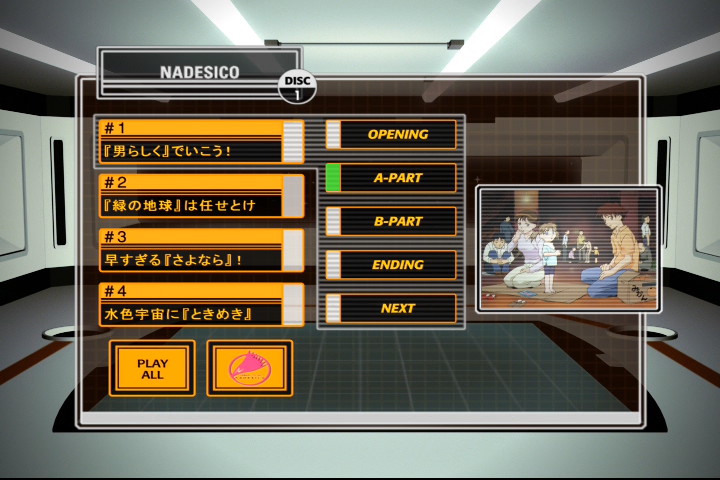Video quality is far better than any of the previous releases I've seen. Colors are just right and the detail level is as good as it gets given DVD resolution. I also did not notice any bothersome edge enhancement. Film shake is also reduced, but film grain has increased a lot. Film grain never bothers me, though. In fact, I miss the film grain on the newer all-digital animation productions.
The only issue I've noticed so far is the aliasing on diagonal lines that come and go in mostly static scenes. It doesn't follow the 3:2 pulldown timing, so I don't believe it has anything to do with bad pulldown detection. My guess is that it has something to do with film shake reduction mechanism. It's probably a form of digital image stabilization technology that repositions shaking frames, which requires dynamically moving entire frames by non-integer pixel distances. Any movement by fractions of pixel size requires re-rendering of lines, and doing it badly would cause aliasing artifacts to appear. Personally, I don't mind film shakes, so I would have preferred if they did not try to compensate for it. Of course, this is just my best guess at the problem. I do not know for sure what is causing the aliasing artifacts. Either way, DCDi appears to kick in to reduce the problem under my setup. I'm not sure if I should be happy about DCDi still being useful or be sad that it's still needed.
Now to the audio side. The new 5.1ch mix is very well done. It is very natural sounding while being a lot more prominent than Prologic II or other similar technologies. It's definitely not annoying like certain Pony Canyon efforts like Koutetsu Tenshi Kurumi, which has exaggerated quality.
Also, they didn't just redo the positioning. Dialogs are better focused and even the dynamic range is expanded. So far, I have nothing to complain about the audio quality.

Look for aliasing artifacts around diagonal lines around Haruka and Ruri. Look around their chins and arms. Yes, you will find the artifacts around Haruka's... umm... breasts as well.




New remaster uses the same newer cells used for the video releases (compared to the TV broadcast version), but is better framed. You can see all the way to the end of Megumi's bang and more in the new remastered version.

